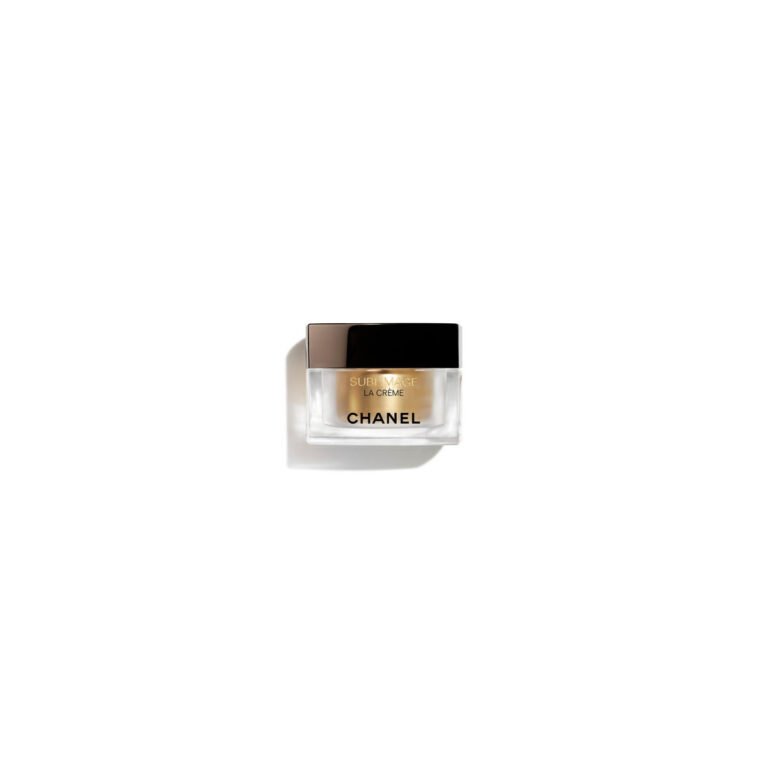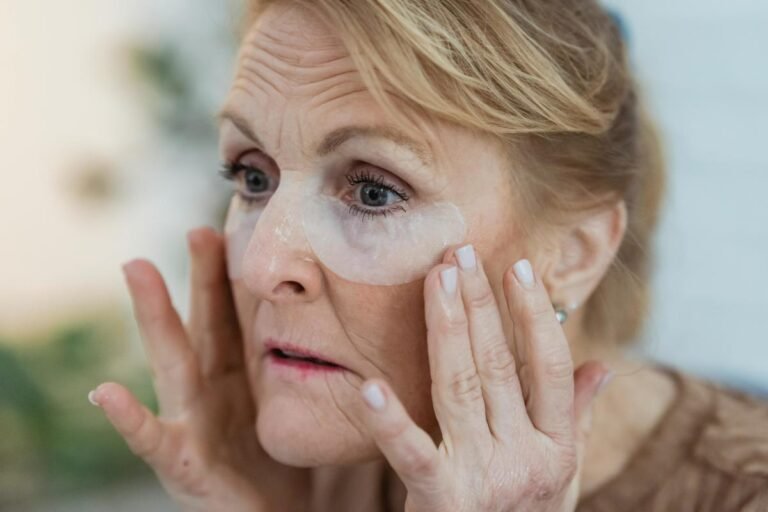How to get rid of back pimples

Introduction
Back pimples – those pesky, often painful blemishes that appear on your back – can significantly impact your confidence and daily life. You might feel hesitant to wear certain clothes or engage in activities that expose your back, creating a constant source of anxiety and self-consciousness.
The struggle with bacne is real and widespread. Whether you’re a teenager dealing with hormonal changes or an adult experiencing persistent breakouts, the search for effective solutions can feel overwhelming. Many people battle this common skin condition, trying countless products and treatments in hopes of achieving clear, smooth skin.
The path to managing back pimples requires a comprehensive strategy that addresses both immediate concerns and long-term prevention. Your journey to clearer skin involves:
- Understanding the root causes of your breakouts
- Implementing targeted skincare routines
- Making smart lifestyle adjustments
- Using appropriate treatments, from natural remedies to medical interventions
You’re not alone in this battle, and effective solutions exist. By combining proven at-home treatments with professional guidance when needed, you can develop a personalized approach to tackle your back acne. Let’s explore the various methods and strategies that can help you achieve the clear, confident skin you deserve.
Understanding the Causes of Back Acne
Back acne develops through a complex interplay of biological factors within your skin. The process begins in your hair follicles, which contain sebaceous glands that produce natural oils (sebum) to keep your skin moisturized. These follicles can become breeding grounds for acne when:
- Excess Oil Production: Your sebaceous glands generate too much oil
- Dead Skin Cell Buildup: Skin cells don’t shed properly
- Bacterial Growth: P. acnes bacteria multiply rapidly
- Inflammation: Your immune system responds to bacterial presence
The combination of these factors leads to clogged pores and subsequent breakouts on your back. Unlike facial acne, back pimples often appear larger and more severe due to the skin’s thickness in this area.
Several key triggers can set this process in motion:
Genetic Predisposition Your DNA influences how your skin responds to hormones and bacteria. If your parents experienced severe acne, you might be more susceptible to breakouts.
- Puberty
- Menstrual cycles
- Pregnancy
- Stress-induced hormonal changes
Physical Factors
- Heavy sweating during exercise
- Tight-fitting, non-breathable clothing
- Friction from backpacks or sports equipment
- Delayed showering after workouts
Environmental Elements
- High humidity levels
- Exposure to oil-based products
- Certain medications
- Diet high in dairy or refined sugars
Understanding these root causes helps target treatment strategies effectively. Your back’s skin has unique characteristics that make it prone to breakouts:
- Larger pores than facial skin
- Higher concentration of oil glands
- Limited air exposure due to clothing
- Difficulty reaching certain areas for proper cleansing
These factors create an environment where bacteria thrive and pores become easily blocked, leading to persistent bacne issues.
Identifying Risk Factors for Developing Back Pimples
Your risk of developing back pimples increases significantly during adolescence. The surge in testosterone levels affects both males and females, triggering excess oil production in skin glands. This hormonal shift typically begins between ages 12-14, with acne peaks occurring around:
- Ages 14-17 for females
- Ages 16-19 for males
Key Hormonal Risk Factors:
- Menstrual cycles
- Pregnancy
- Polycystic ovary syndrome (PCOS)
- Increased androgen levels
Your daily habits play a crucial role in back acne development. Research shows certain lifestyle factors can trigger or worsen breakouts:
Diet-Related Triggers:
- High-glycemic foods
- Dairy products
- Processed snacks
- Whey protein supplements
Exercise and Activity Factors:
- Delayed showering after workouts
- Tight, non-breathable workout clothes
- Heavy backpacks creating friction
- Extended periods of sweating
Environmental Influences:
- High humidity levels
- Hot weather conditions
- Exposure to pollutants
- Chlorinated pool water
Genetic predisposition also determines your susceptibility to back acne. If your parents experienced severe acne, you’re more likely to develop similar skin concerns due to genetic factors. This genetic link affects:
- Oil production levels
- Skin cell turnover rate
- Inflammatory response
- Bacterial resistance
Understanding these risk factors helps you identify personal triggers and adapt your skincare routine accordingly. Your skin’s response to these factors varies based on individual sensitivity and genetic makeup. For instance, the hormonal changes during adolescence can significantly influence acne development. Additionally, lifestyle choices such as diet and exercise, as well as environmental influences, can exacerbate the condition. It’s also important to note that certain genetic traits may predispose individuals to acne, affecting various aspects of skin health such as oil production and inflammatory response.
Practical Tips for Managing Back Pimples at Home
Managing back pimples effectively starts with a consistent at-home care routine. Here’s your guide to tackling bacne through proven home treatments:
Post-Workout Hygiene Protocol
- Shower immediately after sweating
- Use lukewarm water (hot water can irritate skin)
- Pat dry with a clean towel – no rubbing
- Change into fresh, clean clothes
Effective Body Washes
- Look for products containing:
- Benzoyl peroxide (2.5% – 10%)
- Salicylic acid (1% – 2%)
- Tea tree oil
- Use non-comedogenic formulas
- Apply body wash with a soft, clean washcloth
- Let the product sit on your skin for 30-60 seconds
Targeted Spot Treatments
- Apply benzoyl peroxide creams directly to affected areas
- Use salicylic acid pads for hard-to-reach spots
- Consider glycolic acid treatments for stubborn areas
- Apply treatments after showering on clean, dry skin
Exfoliation Strategy
- Exfoliate 2-3 times per week
- Choose between:
- Chemical exfoliants (AHA/BHA products)
- Gentle physical scrubs
- Use a long-handled back scrubber for better reach
- Focus on problem areas without over-scrubbing
Daily Care Routine
- Cleanse with medicated body wash
- Apply spot treatment to active breakouts
- Use non-comedogenic moisturizer
- Wear loose-fitting, breathable clothing
Essential Tools
- Back lotion applicator
- Clean washcloths (replace weekly)
- Acne-fighting body sprays
- Oil-free sunscreen for exposed areas
Remember to patch test new products on a small area first. Start with lower concentrations of active ingredients and gradually increase strength as your skin adjusts. Keep your bedding clean, changing sheets weekly and pillowcases every few days to prevent bacteria buildup.
Additionally, following some practical tips for managing body acne can significantly improve your skin condition over time.
Exploring Natural Remedies for Treating Bacne
Natural remedies offer a gentle alternative for treating back acne, particularly beneficial for those with sensitive skin or seeking chemical-free solutions. These time-tested treatments harness the power of natural ingredients to combat inflammation and bacteria.
1. Tea Tree Oil
- Mix 3-4 drops with a carrier oil like jojoba or coconut
- Apply directly to affected areas using a cotton ball
- Contains antimicrobial properties that fight acne-causing bacteria
- Use twice daily for optimal results
2. Apple Cider Vinegar
- Dilute 1 part ACV with 3 parts water
- Apply using a spray bottle for hard-to-reach areas
- Natural astringent properties help balance skin pH
- Contains alpha-hydroxy acids that gently exfoliate
3. Aloe Vera
- Apply pure aloe gel directly to affected areas
- Reduces inflammation and redness
- Promotes healing of existing breakouts
- Contains natural salicylic acid
4. Essential Oil Blend
- Lavender oil: Reduces inflammation
- Rosemary oil: Controls excess oil production
- Frankincense oil: Promotes skin cell regeneration
- Mix 2 drops each with carrier oil before application
5. Green Tea Compress
- Brew strong green tea and let it cool
- Apply using a clean cloth to affected areas
- Rich in antioxidants that fight inflammation
- Contains catechins that reduce bacterial growth
6. Turmeric Paste
- Mix turmeric powder with water or honey
- Apply as a spot treatment
- Leave on for 15-20 minutes
- Contains curcumin with anti-inflammatory properties
These natural remedies work best when used consistently as part of your skincare routine. Remember to patch test new treatments on a small area first to ensure no adverse reactions occur. The healing properties of these natural ingredients can help reduce inflammation while promoting clearer, healthier skin.
Making Lifestyle Adjustments to Prevent Back Pimples from Recurring
Simple daily habits can make a significant difference in preventing back pimples from returning. Here’s how you can adjust your lifestyle to maintain clear, healthy skin:
Choose Your Clothing Wisely
- Opt for loose-fitting clothes made from natural fibers like cotton
- Avoid synthetic materials that trap heat and moisture
- Change out of tight workout clothes immediately after exercise
- Select breathable fabrics for your bedding and sleepwear
Post-Exercise Skincare Routine
- Shower within 30 minutes after sweating
- Use lukewarm water instead of hot water
- Pat your skin dry with a clean towel
- Apply non-comedogenic moisturizer while skin is slightly damp
Stress Management Techniques
- Practice deep breathing exercises for 5-10 minutes daily
- Incorporate regular physical activity into your routine
- Get 7-8 hours of quality sleep each night
- Try meditation or mindfulness apps
Additional Daily Habits
- Change your sheets weekly
- Keep long hair tied back during sleep
- Clean your phone screen regularly
- Avoid touching your back unnecessarily
- Use fragrance-free laundry detergent
Diet and Hydration
- Drink at least 8 glasses of water daily
- Limit dairy and high-glycemic foods
- Include zinc-rich foods in your diet
- Consider taking probiotics for gut health
These lifestyle modifications work best when implemented consistently. Track your skin’s response to different changes and adjust accordingly. Remember that your skin needs time to adapt to new routines, so maintain these habits even after seeing improvements.
When to Seek Professional Help for Persistent Bacne Issues
Knowing when to see a dermatologist can greatly improve your fight against stubborn back acne, also known as bacne. Here are clear signs it’s time to seek professional help:
- Persistent breakouts lasting longer than 4-6 weeks despite consistent use of over-the-counter treatments
- Deep, painful cysts or nodules that don’t respond to typical acne products
- Severe inflammation accompanied by redness and swelling
- Signs of infection such as warmth, tenderness, or pus
- Development of scars from healing acne lesions
Professional dermatologists offer several effective treatment options for severe back acne, which may include insights from the latest research on bacne treatment.
Prescription Medications:
- Oral antibiotics to combat bacteria and reduce inflammation
- Isotretinoin for severe, cystic acne cases
- Birth control pills to regulate hormonal acne in women
- Spironolactone for hormone-related breakouts
Topical Treatments:
- Prescription-strength retinoids
- Medical-grade benzoyl peroxide
- Professional-strength salicylic acid preparations
- Combination therapy products
In-Office Procedures:
- Chemical peels
- Light therapy treatments
- Steroid injections for large, painful cysts
- Extraction of severe blackheads and whiteheads
A dermatologist will create a personalized treatment plan based on your specific acne type, severity, and skin characteristics. They’ll also monitor your progress and adjust treatments as needed to achieve optimal results.
Many insurance plans cover dermatology visits for severe acne treatment, making professional care a viable option for those struggling with persistent back acne.
Long-Term Strategies for Maintaining a Clear Back Complexion
A consistent skincare routine forms the foundation of maintaining clear, healthy back skin. Your daily regimen should include:
Morning Routine
- Gentle cleansing with a pH-balanced body wash
- Application of non-comedogenic moisturizer
- Broad-spectrum sunscreen (SPF 30+) for exposed areas
Evening Routine
- Deep cleansing to remove daily buildup
- Treatment products with active ingredients
- Light, breathable sleepwear
Dietary Habits for Skin Health:
- Anti-inflammatory Foods
- Leafy greens
- Berries
- Fatty fish rich in omega-3s
- Nuts and seeds
- Green tea
- Hydration Requirements
- 8-10 glasses of water daily
- Herbal teas
- Water-rich fruits and vegetables
Weekly Maintenance:
- Gentle exfoliation (2-3 times per week)
- Deep cleansing masks
- Fresh towels and bedding changes
- Workout clothes laundering after each use
Your skin responds to consistent care and nourishment from both inside and out. Track your skin’s response to different products and dietary changes in a skin journal. This helps identify triggers and effective treatments for your specific skin type.
Regular exercise promotes healthy blood circulation and natural detoxification through sweating. Pair physical activity with proper post-workout hygiene:
- Shower immediately after exercise
- Use clean, dry towels
- Apply non-comedogenic body lotion
- Wear loose, breathable clothing
Stress management plays a crucial role in skin health. Include relaxation techniques in your daily routine:
- Deep breathing exercises
- Regular meditation
- Adequate sleep (7-9 hours)
- Yoga or gentle stretching
These habits create a strong foundation for maintaining clear back skin long-term. Remember to adjust your routine based on seasonal changes and your skin’s evolving needs.
Addressing Post-Acne Marks and Scars Left Behind by Bacne
Back acne scars develop when inflammation damages the skin’s collagen during the healing process. These marks can persist long after active breakouts have cleared, presenting as:
- Post-inflammatory hyperpigmentation (PIH) – Dark spots or patches
- Ice pick scars – Deep, narrow indentations
- Rolling scars – Wave-like depressions
- Boxcar scars – Wide, box-shaped depressions
Professional Treatment Options
Several clinical treatments can significantly reduce the appearance of bacne scars:
- Laser Therapy
- Fractional laser resurfacing
- Pulsed dye laser
- CO2 laser treatment
- Chemical Peels
- Glycolic acid
- TCA peels
- Salicylic acid peels
- Microdermabrasion
- Crystal microdermabrasion
- Diamond-tip microdermabrasion
At-Home Solutions
You can start addressing mild scarring with these targeted ingredients:
- Vitamin C serums
- Retinoids
- Alpha hydroxy acids (AHAs)
- Niacinamide
- Rosehip oil
Prevention Tips During Active Breakouts
Proper care during active breakouts can minimize scarring:
- Never pick or squeeze back pimples
- Apply spot treatments with benzoyl peroxide
- Use sunscreen to prevent dark marks from worsening
- Keep the affected area moisturized
- Start treatment early to prevent deep scarring
Time Frame for Results
Scar treatment requires patience:
- Superficial marks: 3-6 months
- Deep scars: 6-12 months with professional treatment
- Multiple sessions needed for optimal results
Conclusion
Clearing back pimples requires a dedicated commitment to your skin’s health. A comprehensive approach combining proper skincare, lifestyle adjustments, and targeted treatments creates the foundation for lasting results.
Your journey to clear skin might include:
- Daily cleansing routines with acne-fighting ingredients
- Strategic lifestyle changes like wearing breathable fabrics
- Dietary modifications supporting skin health
- Professional treatments when needed
Remember that each person’s skin responds differently to treatments. What works quickly for one individual might take longer for another. The key lies in consistency – stick to your chosen treatment plan for at least 8-12 weeks before evaluating its effectiveness.
Stay patient through the healing process. Your skin needs time to:
- Clear existing breakouts
- Repair damaged tissue
- Build resistance against future flare-ups
- Fade post-acne marks
Track your progress with photos rather than daily mirror checks. This method provides a clearer picture of improvements over time.
You’ve learned the tools and techniques to manage back acne effectively. Armed with this knowledge, you’re ready to take control of your skin’s health. Start implementing these strategies today, and watch your confidence grow as your skin transforms.
FAQs (Frequently Asked Questions)
What are back pimples and how do they affect self-esteem?
Back pimples, also known as bacne, can significantly impact an individual’s self-esteem. The visibility of these blemishes can lead to discomfort in social situations and a lack of confidence in one’s appearance.
What causes back acne?
Back acne forms when hair follicles become clogged with oil, dead skin cells, and bacteria. Common culprits include genetics, hormonal changes, and excessive sweating, which can all contribute to breakouts.
What lifestyle factors can increase the risk of developing back pimples?
Factors such as age, hormonal changes during adolescence, and lifestyle choices like diet and exercise can influence skin health. Poor hygiene practices or wearing non-breathable fabrics may also exacerbate bacne.
What are some effective home remedies for managing back pimples?
Maintaining proper hygiene is crucial. Using non-comedogenic body washes containing ingredients like benzoyl peroxide or salicylic acid can be effective. Exfoliation also helps prevent clogged pores and promotes clearer skin.
When should I seek professional help for persistent bacne?
If at-home treatments are insufficient for stubborn bacne, it may be time to consult a dermatologist. They can recommend professional interventions such as oral antibiotics or topical retinoids tailored to your specific needs.
How can I address post-acne marks left by bacne?
Post-acne marks form after breakouts subside. Effective methods to reduce their appearance include treatments like laser therapy and chemical peels. Consistent skincare and patience are key in managing these marks over time.










